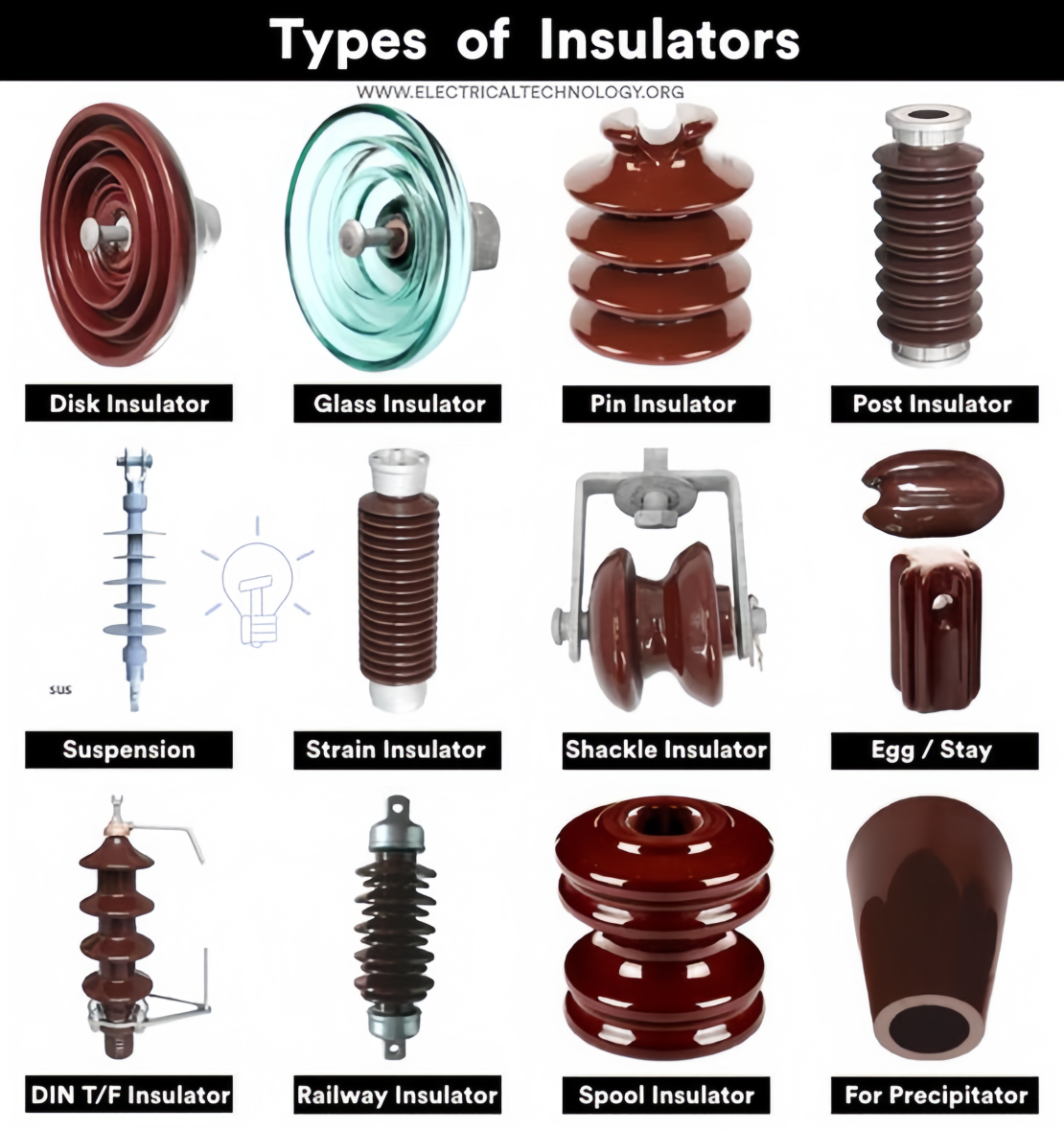What are the types of insulators?
2024-05-30
2024-5-30
Insulators are characterized in several common classes:
Pin insulator - The pin-type insulator is mounted on a pin affixed on the cross-arm of the pole. The insulator has a groove near the top just below the crown. The conductor passes through this groove and is tied to the insulator with annealed wire of the same material as the conductor. Pin-type insulators are used for transmission and distribution of communication signals, and electric power at voltages up to 33 kV. Insulators made for operating voltages between 33 kV and 69 kV tend to be bulky and have become uneconomical.
Post insulator - A type of insulator in the 1930s that is more compact than traditional pin-type insulators and which has rapidly replaced many pin-type insulators on lines up to 69 kV and in some configurations, can be made for operation at up to 115 kV.

Suspension insulator - For voltages greater than 33 kV, it is a usual practice to use suspension type insulators, consisting of a number of glass or porcelain discs connected in series by metal links in the form of a string. The conductor is suspended at the bottom end of this string while the top end is secured to the cross-arm of the tower. The number of disc units used depends on the voltage.
Strain insulator - A dead end or anchor pole or tower is used where a straight section of line ends, or angles off in another direction. These poles must withstand the lateral (horizontal) tension of the long straight section of wire. To support this lateral load, strain insulators are used. For low voltage lines (less than 11 kV), shackle insulators are used as strain insulators. However, for high voltage transmission lines, strings of cap-and-pin (suspension) insulators are used, attached to the crossarm in a horizontal direction. When the tension load in lines is exceedingly high, such as at long river spans, two or more strings are used in parallel.
Shackle insulator - In early days, the shackle insulators were used as strain insulators. But nowaday, they are frequently used for low voltage distribution lines. Such insulators can be used either in a horizontal position or in a vertical position. They can be directly fixed to the pole with a bolt or to the cross arm.
Bushing - enables one or several conductors to pass through a partition such as a wall or a tank, and insulates the conductors from it.
Line post insulator
Station post insulator




